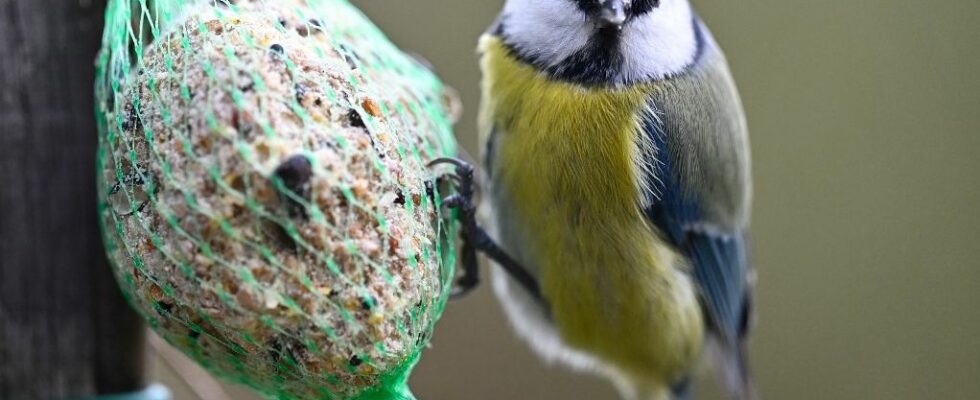It can be the fun and soothing activity of this weekend. Like every end of January, the League for the Protection of Birds (LPO) and the National Museum of Natural History invite us to observe our gardens for an hour. It also works on balconies or in a public garden. The instruction is always the same: count and identify all the birds that land, whether on the ground, on a branch, on a fence. Then send the results on an online platform. Not so simple, at first sight, when you don’t know anything about birds. There are still online guides to help you. “And we quickly get caught up in the game,” promises Marjorie Poitevin, who coordinates this “Garden Bird Observatory” for the LPO.
It’s been ten years since this operation returns on the last weekends of January and May. In 2012, 3,000 French people answered the call. Six thousand the following year, 10,000 in 2017 and up to 40,000 in 2020, when confinement put us all in search of activities to do at home.
Largest participatory science program in France
Since then, participation has fallen somewhat. They were still more than 28,000 last year again. What makes this observatory the largest citizen science program of France. In ten years, nearly a million data have been collected in 58,220 gardens, counts the LPO. Du Conquet (Finistère) at Furiani (Upper Corsica) and of Leffrinchouke (North) up to Cerbère (Eastern Pyrenees).
A mine of information for scientists who study the evolution of bird populations in our latitudes. In the same vein, there is already the Temporal monitoring of common birds (Stoc), another participatory program, launched in 1989 and “supplied, this time, by experts whose observations are mainly made in the countryside”, specifies Benoît Fontaine, biologist at the Mnhn. The garden bird observatory then provides a very good point of comparison, on spaces more shaped by man, such as our parks and gardens.
Counters that panic in winter
What can we learn from these ten years of observation? Few good news, to listen to Allain Bougrain-Dubourg, president of the LPO. However, not all trends are downward. On the counts made the last weekend of January, it is even quite the opposite. “There is a very strong increase in populations for 49% of the species observed”, notes Allain Bougrain-Dubourg. The most emblematic example is the rose-ringed parakeetnative to Asia and Africa, accidentally released in France in the 1970s. our gardens.
Other species panic the counters in winter. The European goldfinch, the chaffinch, the blackcap… Allain Bougrain-Dubourg is not happy about it. “These are often species from northern and eastern Europe that traditionally come to spend the winter in France, in search of milder temperatures,” he recalls. Previously, these birds spread mainly in our countryside. They find there less and less food resources today, so much so that they refer to the gardens where more and more individuals feed them in winter. »
In other words, this increase in observations reflects more behavioral changes in these birds than an increase in their populations. This is obvious for the goldfinch, “easily identifiable and therefore little affected by counting errors”, specifies Benoît Fontaine. “The observatory of the gardens shows a strong increase in the number of individuals in winter for ten years, when the Stoc program – rather on the countryside therefore – has stable numbers”, continues the biologist.
Depopulated gardens in spring
On the other hand, for the spring counts, there is no doubt: the trends are bad. Only 2% of the species usually encountered in gardens during this period have seen their numbers increase since 2013. For 24%, they are stable. And for 41%, the populations are in decline. Sometimes very clearly. “For the black swift or the European greenfinch, the abundance has dropped by 46% in ten years”, Allain Bougrain-Dubourg is alarmed. And the trends are just as bad in Stoc for these two volatiles.
It is this spring decline that holds the attention of the president of the LPO, “because it affects the birds “of France”, that is to say the species that nest here”, he explains. . “And it no longer reflects changes in behavior but a lot of population declines this time,” adds Benoît Fontaine.
These results therefore tend to confirm this general loss of biodiversity abundance already observed in several scientific studies. For example, the one published in October 2017 in review PlosOne, who had caused a stir by estimating at 75% the decline in the biomass of flying insects in nearly 30 years in Germany. The authors suspected the intensification of agriculture, in particular the increased use of pesticides, to be the main cause.
Insects fall, birds follow
It also affects birds, at least indirectly, as these flying insects are their staple food in the spring. The LPO and the Museum make this scarcity of food resources one of the main causes of the decline in bird numbers from spring onwards. Added to this are diseases, the degradation of natural habitats (destruction of hedges, for example), increasing artificialization or repeated heat waves.
“Some summers, we measured temperatures of more than 40°C in the nests, forcing young people to leave them hastily says Allain Bougrain-Dubourg. Another threat, more surprising: the energy renovation of buildings. Very often, for insulation issues, it involves filling the cavities in the facades and roofs. Holes that several species like to set up their nests. The black swift in particular.

